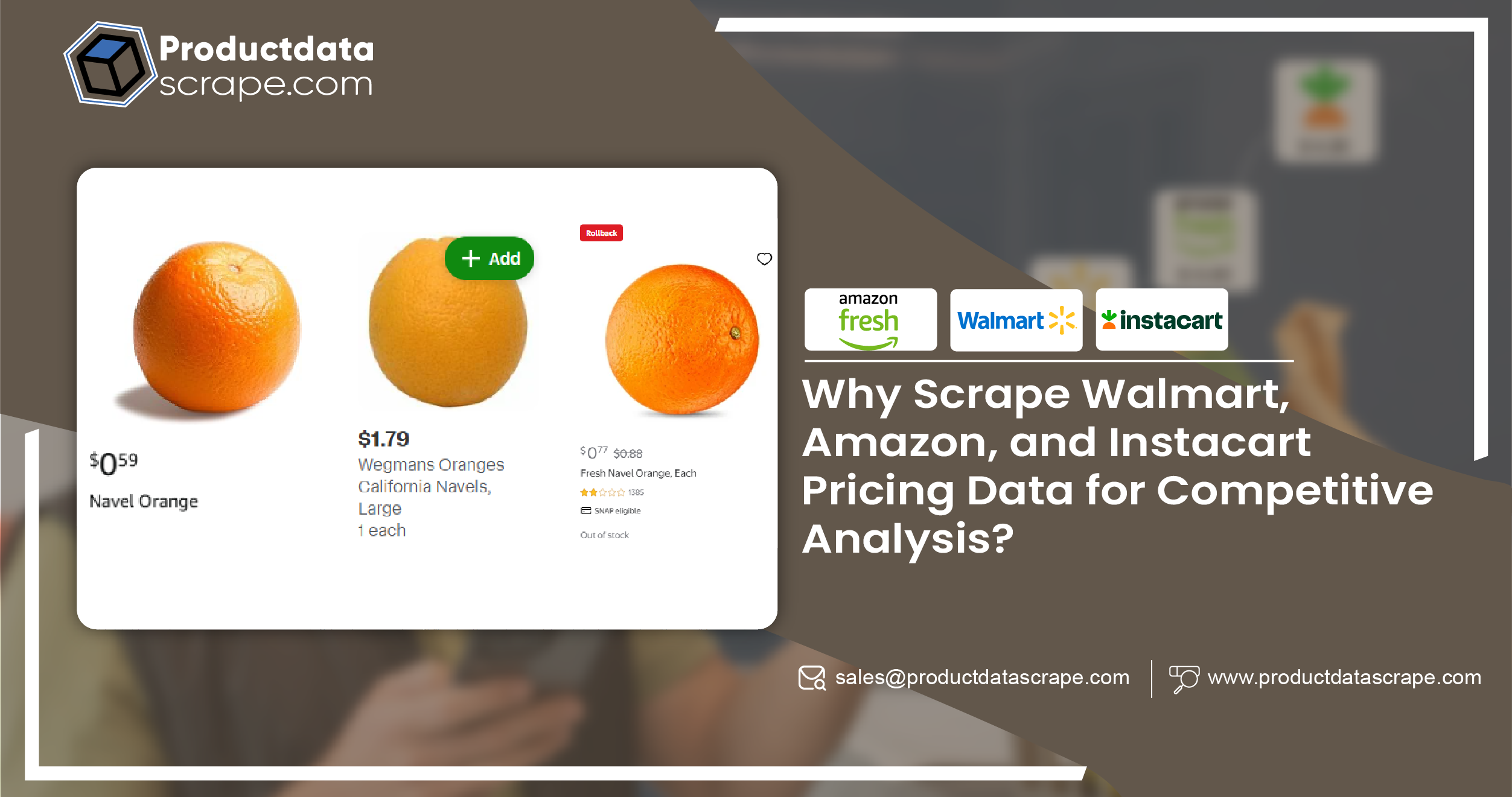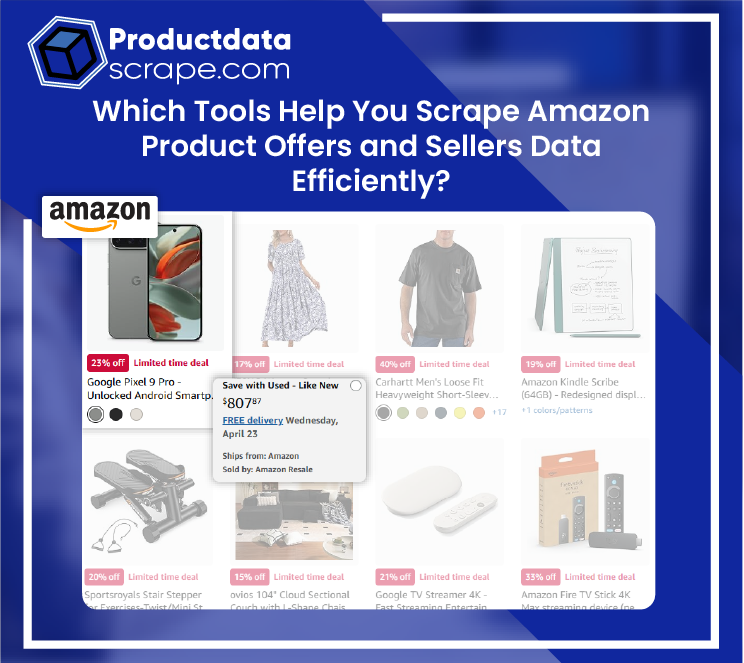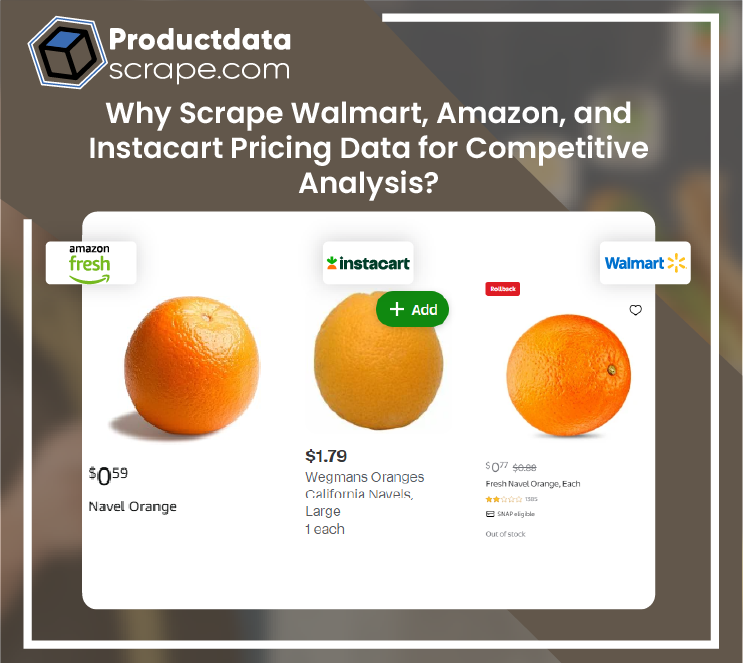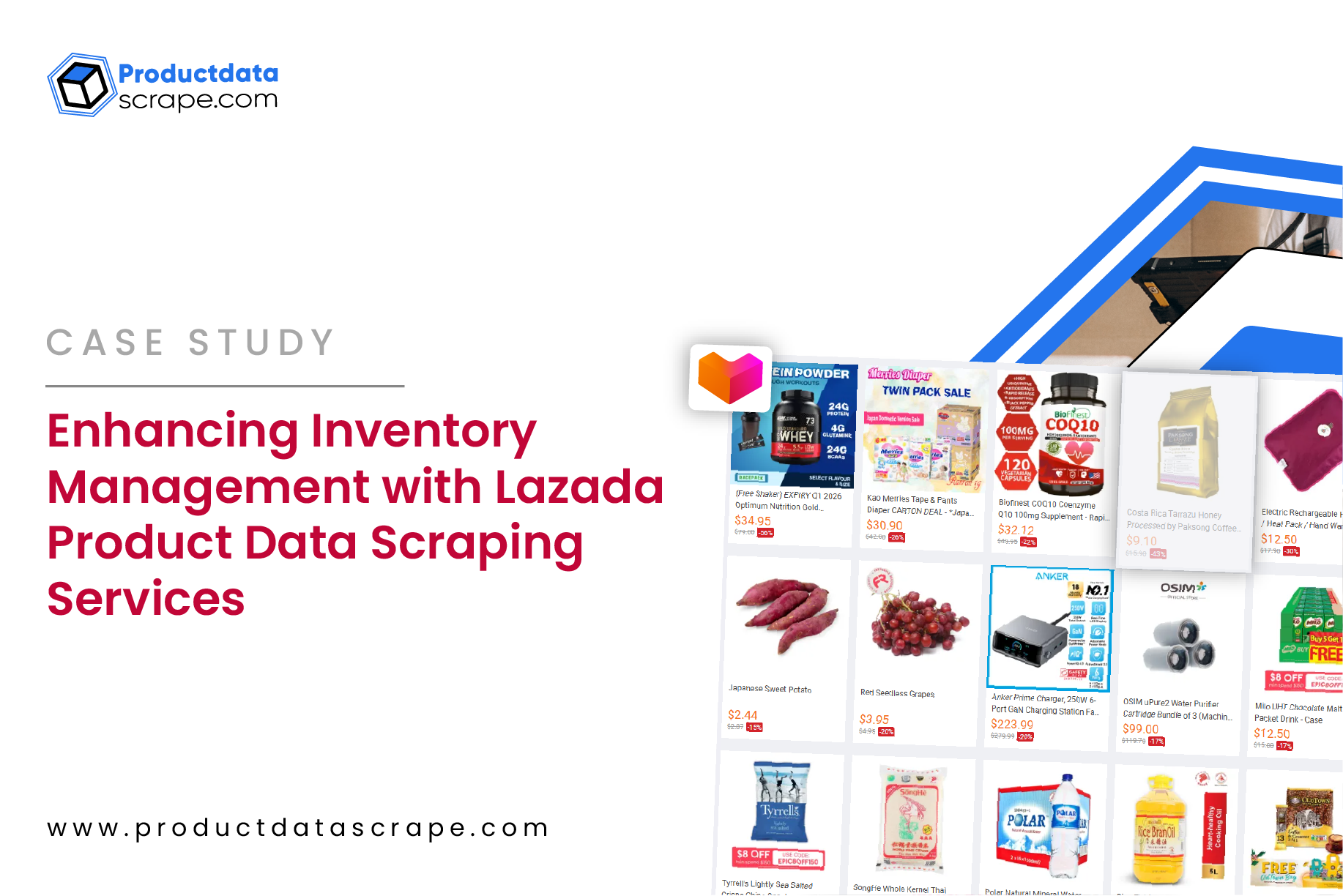Introduction
In today’s dynamic retail landscape, gaining a competitive advantage requires
more than intuition—it calls for actionable insights derived from real-time data. As pricing
strategies evolve, businesses must stay informed to make smarter decisions. This is where data
extraction comes into play. Retailers, analysts, and e-commerce brands now use sophisticated web
scraping solutions to monitor and evaluate pricing models across leading platforms. Scrape
Walmart, Amazon, and Instacart Pricing Data to understand how market leaders price their
products, identify trends, and respond to shifting consumer demands. By collecting this data at
scale, businesses can perform deep competitive analysis, optimize their pricing strategies, and
enhance their product positioning. Whether it’s tracking daily price fluctuations, seasonal
changes, or promotional campaigns, accessing accurate pricing data empowers decision-makers with
a clear market view. This blog dives into the immense value of Web Scraping Walmart, Amazon
Fresh, Instacart for Analysis and how it fuels success in the modern retail ecosystem.
The Power of Pricing Data in Retail
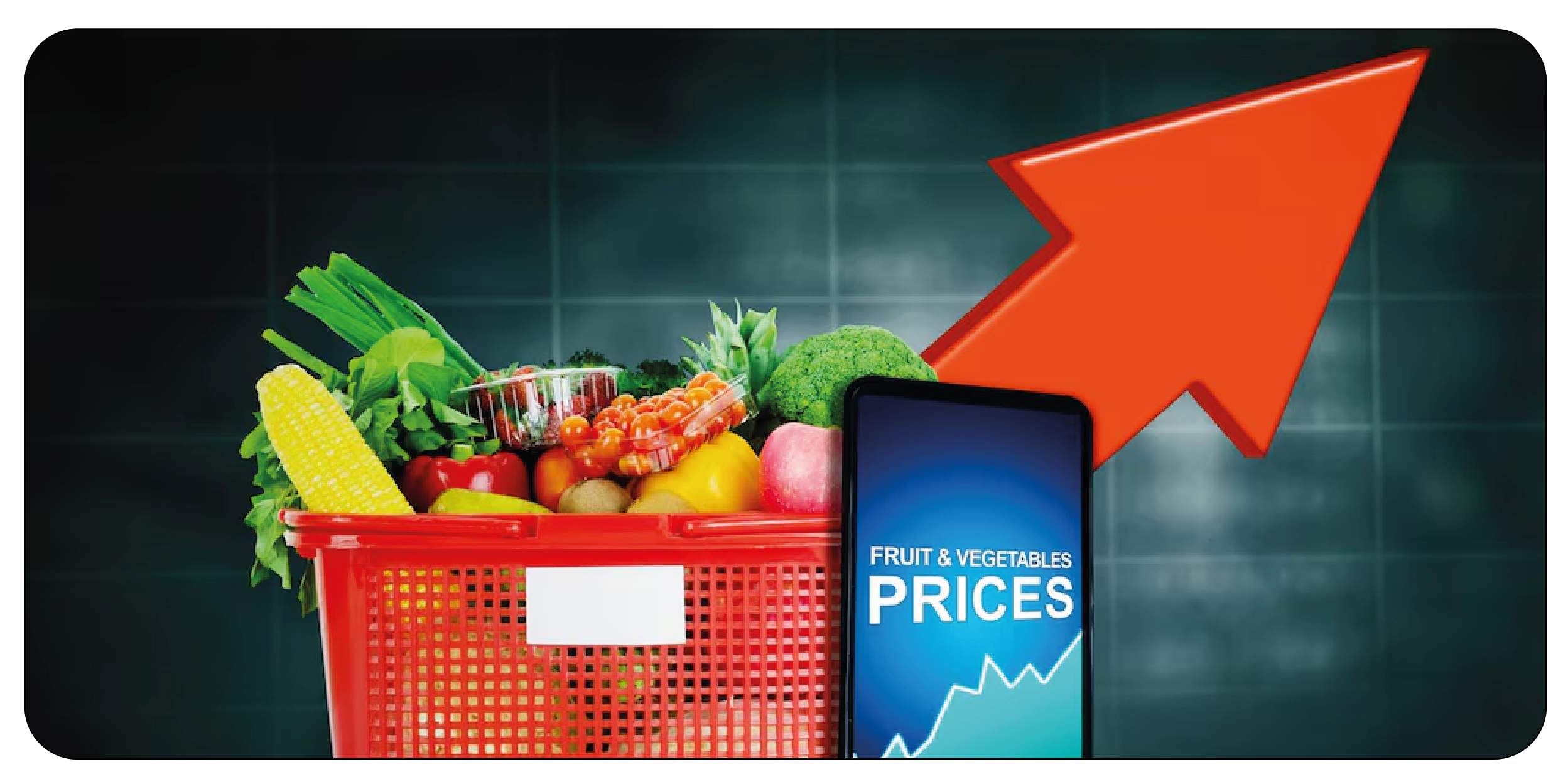
Pricing is one of the most influential factors in consumer purchasing
decisions. For businesses, understanding how competitors price their products can reveal
opportunities to optimize their strategies. Scrape Walmart, Amazon, and Instacart Pricing Data
to understand how these retail giants position their offerings comprehensively. By
systematically collecting product price, discount, and availability data, businesses can
identify patterns, benchmark their pricing, and adjust their strategies to capture market share.
The retail landscape is dynamic, with prices fluctuating based on demand,
promotions, and seasonality. Scraping pricing data allows businesses to monitor these changes in
near real-time, enabling agile responses to market shifts. Whether you’re a small retailer, an
e-commerce platform, or a market research firm, the ability to extract and analyze pricing data
from leading retailers is a game-changer.
Why Focus on Walmart, Amazon, and Instacart?
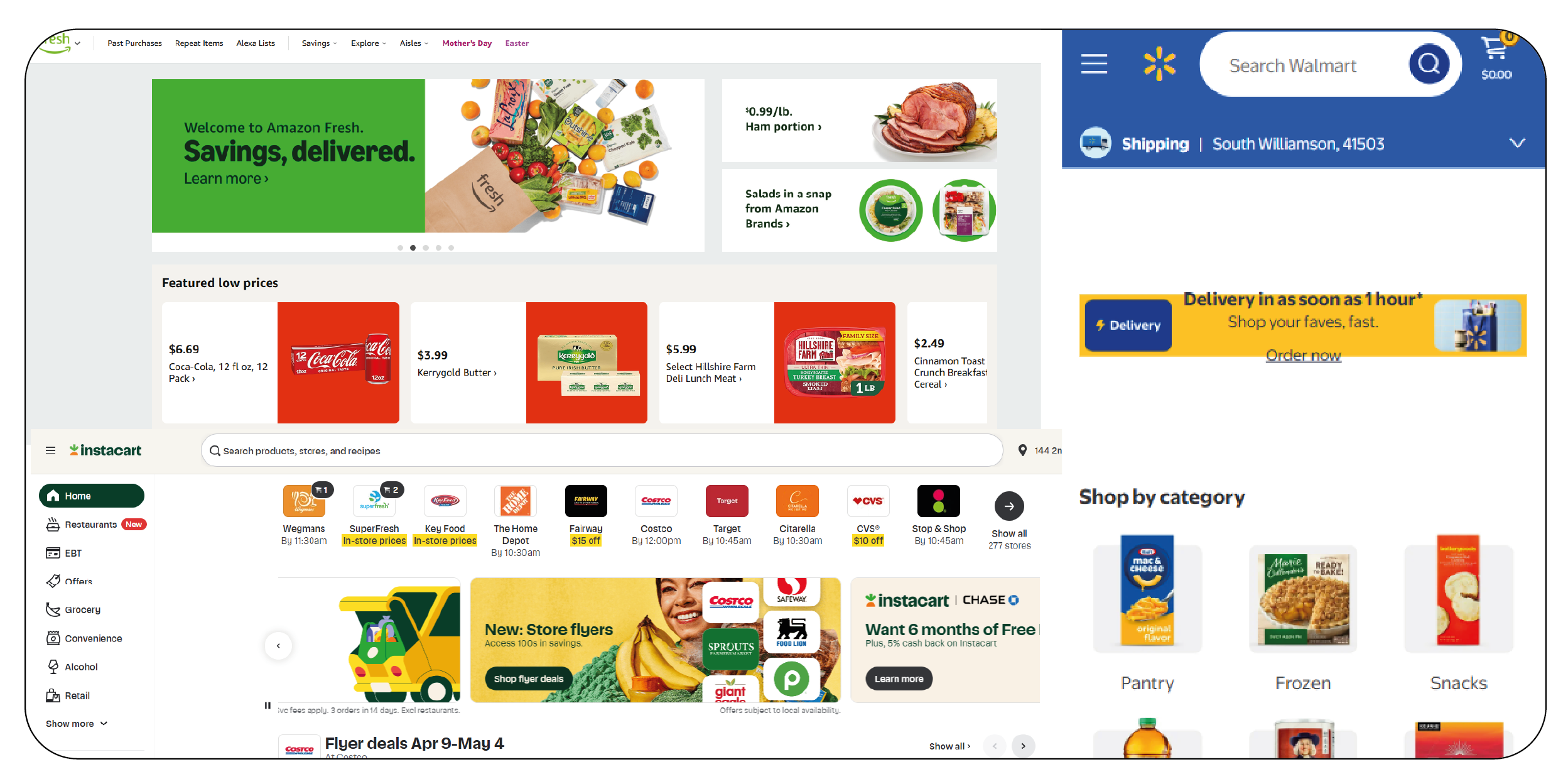
Walmart, Amazon, and Instacart dominate the retail and grocery sectors,
offering unique insights into consumer behavior and market dynamics. Walmart is a powerhouse in
physical and online retail, known for its daily low prices. Through its Amazon Fresh service,
Amazon has redefined grocery shopping with its seamless delivery model. Instacart, as a leading
grocery delivery platform, connects consumers with multiple retailers, making it a rich source
of pricing and product data.
Walmart, Amazon Fresh & Instacart Trends Data Scraping provides a holistic view
of the grocery and retail markets. By analyzing pricing trends across these platforms,
businesses can identify which products are priced competitively, which are premium, and how
discounts influence consumer choices. This data is invaluable for retailers looking to refine
their pricing models or suppliers aiming to negotiate better terms with these giants.
Extracting Comprehensive Product Information
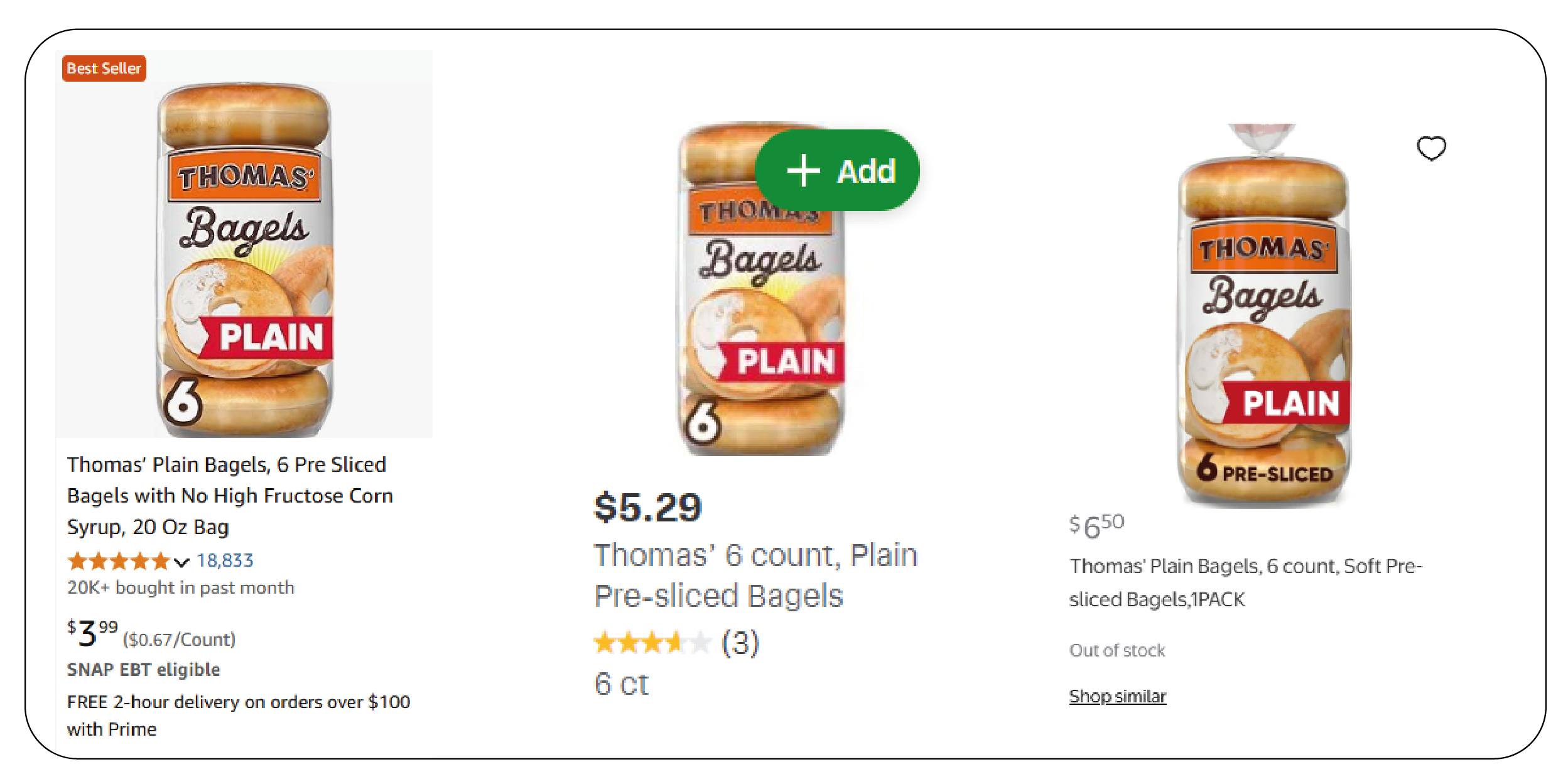
To conduct meaningful competitive analysis, businesses need more than just
price points—they need detailed product information. Extract Product Information from Walmart,
Amazon Fresh, and Instacart to build a robust dataset that includes product names, descriptions,
categories, brands, customer reviews, and pricing. This comprehensive approach enables
businesses to understand not only how products are priced but also how they are positioned in
the market.
For example, scraping product descriptions can reveal how retailers emphasize quality, value, or
convenience, while customer reviews provide insights into consumer satisfaction. By combining
this qualitative data with quantitative pricing information, businesses can develop a nuanced
understanding of their competitors’ strategies and identify gaps in the market.
The Role of Web Scraping in Competitive Analysis

Web Scraping Walmart, Amazon Fresh, Instacart for Analysis is a powerful tool for unlocking
actionable insights. Web scraping involves using automated scripts to extract data from
websites, transforming unstructured web content into structured datasets. For competitive
analysis, scraping tools can be programmed to collect pricing data regularly, ensuring
businesses can access up-to-date information.
The granularity of scraped data allows for detailed comparisons. For instance, businesses can
compare the price of a specific product, such as a 12-ounce box of cereal, across Walmart,
Amazon Fresh, and Instacart. This level of precision helps identify which retailer offers the
best value and how pricing varies by region or delivery option. Over time, this data can reveal
broader trends, such as seasonal price fluctuations or promotional strategies.
Diving into Walmart’s Grocery Data
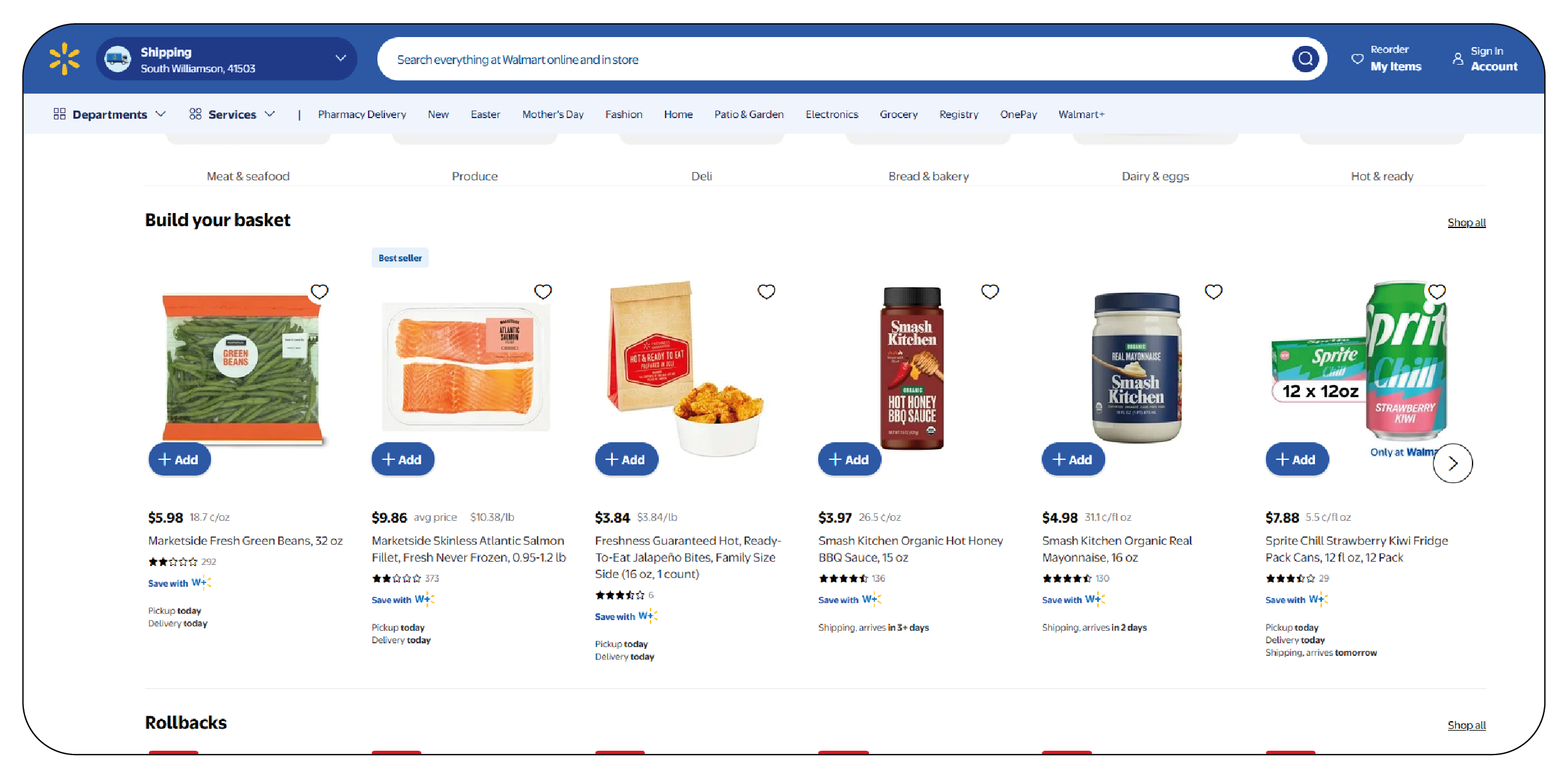
Walmart’s dominance in the grocery sector makes it a prime target for data scraping. Extract
Walmart Grocery product data to understand how the retail giant prices essentials like dairy,
produce, and packaged goods. Walmart’s online platform provides a wealth of data, from product
availability to special offers, which can be scraped to analyze pricing strategies.
Walmart Grocery Data Scraping also enables businesses to track how Walmart adjusts prices in
response to competitors or market conditions. For example, scraping data during major shopping
events like Black Friday or back-to-school season can reveal how Walmart uses discounts to drive
sales. This information is critical for competitors looking to match or undercut Walmart’s
prices without sacrificing profitability.
Unlocking Insights from Instacart’s Grocery Data
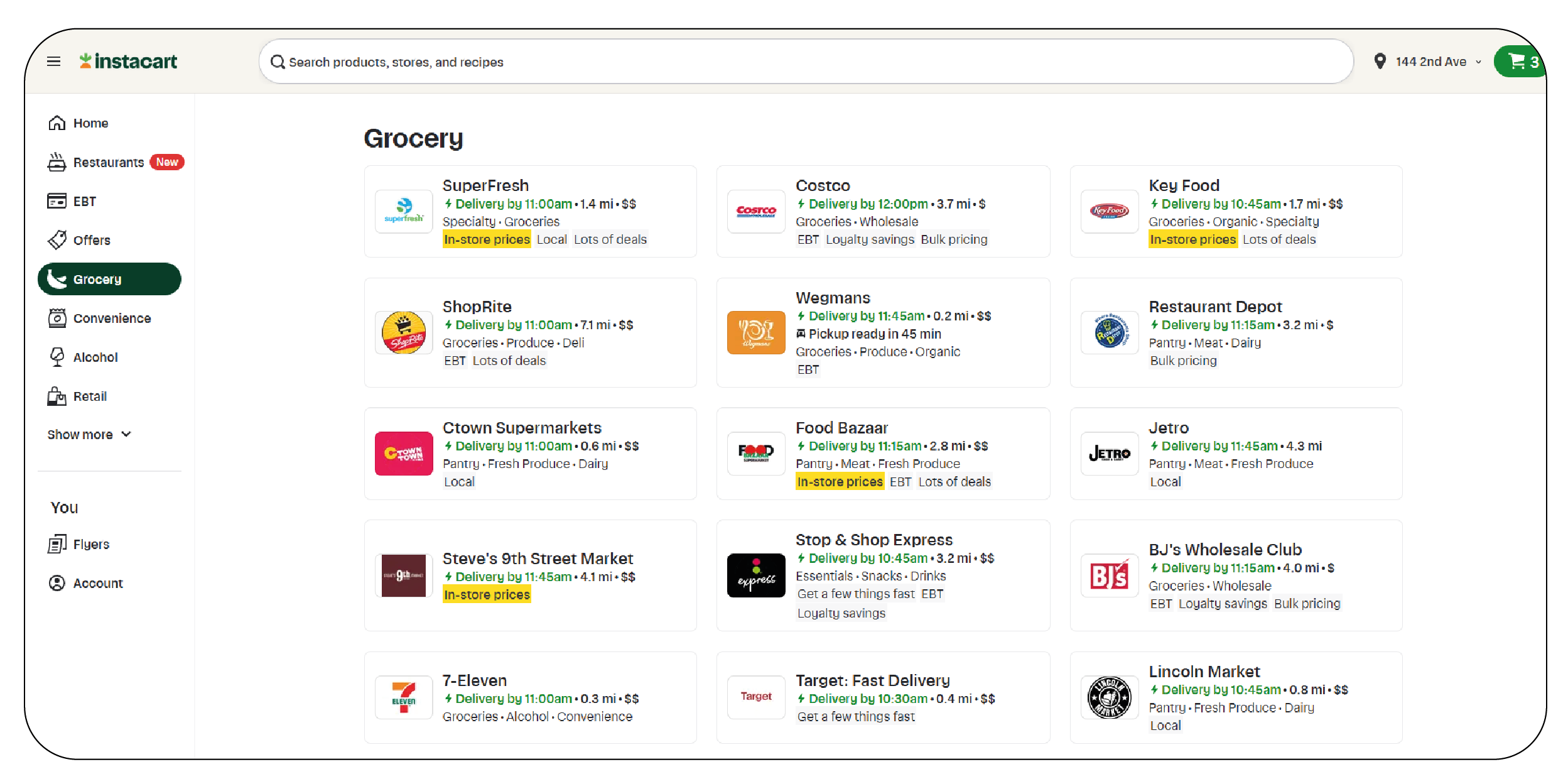
Instacart’s unique position as a grocery delivery platform makes it an essential source of
pricing data. Instacart Grocery Data Scraping allows businesses to collect pricing information
from multiple retailers partnered with Instacart, such as Costco, Safeway, and Kroger. This
aggregated data provides a broader perspective on grocery pricing, enabling businesses to
compare how the same product is priced across different stores.
Web Scraping Instacart grocery product price data also sheds light on delivery fees, service
charges, and promotional offers, critical components of the total cost to consumers. By
analyzing this data, businesses can assess how Instacart’s pricing model influences consumer
behavior and whether delivery costs impact purchasing decisions. For retailers, this information
can inform decisions about partnering with Instacart or offering their delivery services.
Tapping into Amazon Fresh’s Grocery Data
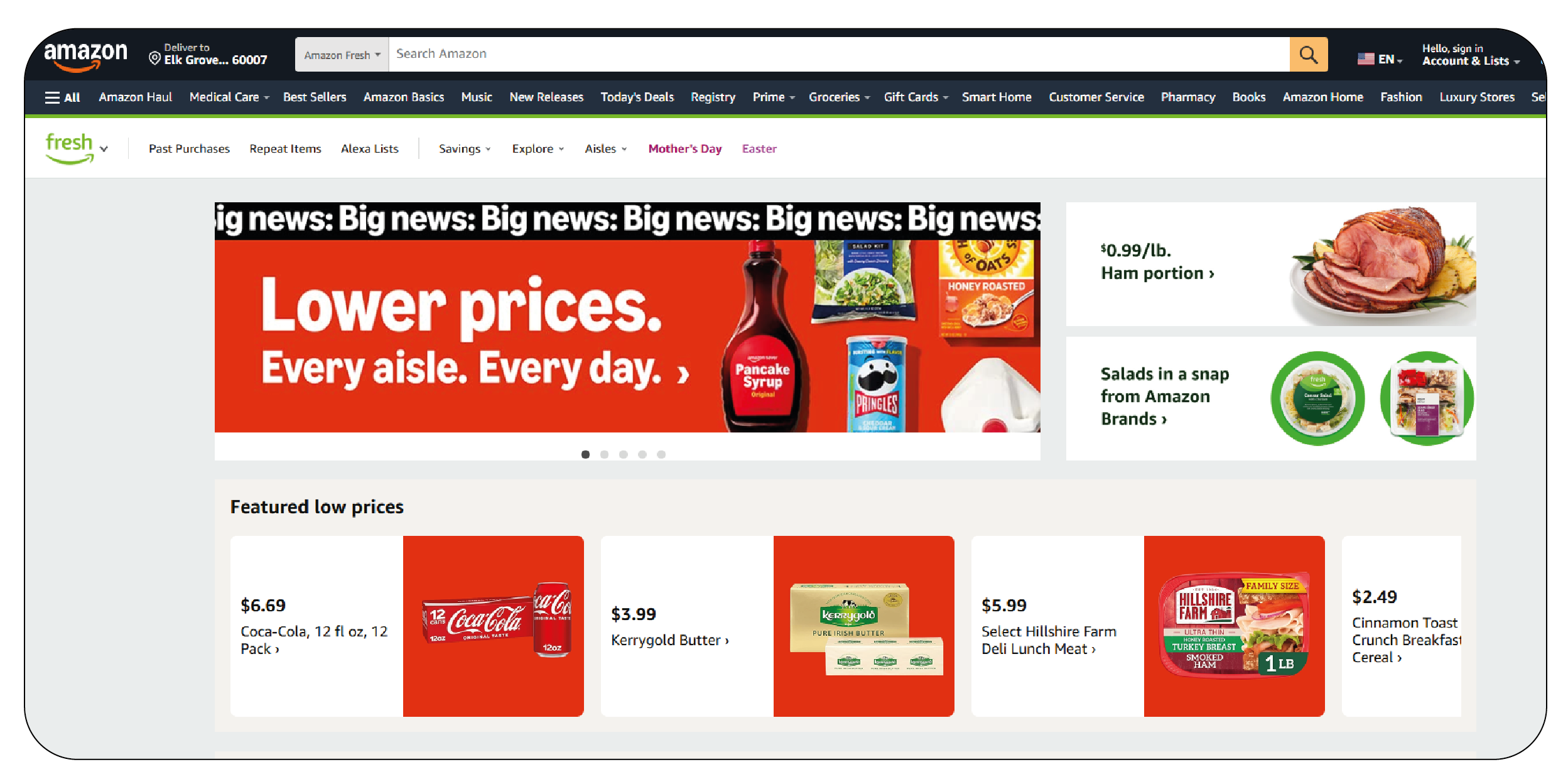
Amazon Fresh has transformed the grocery shopping experience, focusing on convenience and speed.
Amazon Fresh Grocery Data Scraping provides insights into how Amazon prices groceries, from
fresh produce to pantry staples. Since Amazon frequently adjusts prices based on algorithms,
scraping this data helps businesses understand the factors driving these changes, such as
inventory levels or customer demand.
Extract Amazon Fresh Grocery Data to analyze how Amazon uses discounts, subscriptions, and Prime
member benefits to attract customers. For example, scraping data on Amazon Fresh’s promotional
bundles can reveal how the retailer incentivizes bulk purchases. This information is
particularly valuable for competitors looking to emulate Amazon’s strategies or differentiate
their offerings.
Building a Competitive Advantage with Scraped Data
The insights from scraping pricing data are only as valuable as the strategies they inform. By
analyzing pricing trends, product positioning, and promotional tactics across Walmart, Amazon,
and Instacart, businesses can make informed decisions about their own pricing, marketing, and
inventory management. For instance, identifying a competitor’s aggressive discount on a popular
product can prompt a retailer to offer a similar deal or focus on a different product category
to avoid direct competition.
Scraped data can also support advanced analytics, such as predictive modeling and price
elasticity analysis. By understanding how price changes affect demand, businesses can optimize
their pricing strategies to maximize revenue. Combining pricing data with external factors like
economic indicators or consumer sentiment can provide a more comprehensive market view.
Unlock real-time grocery insights today—partner with us to transform raw data into smart retail decisions.
Contact Us Today!
Ethical Considerations in Web Scraping

While web scraping is a powerful tool, it must be conducted responsibly. Retailers’ websites
often have terms of service that outline acceptable uses of their data. Businesses should ensure
their scraping activities comply with these terms and applicable laws, such as data protection
regulations. Using reputable scraping tools and limiting the frequency of data requests can help
minimize the risk of being blocked by a website’s servers.
Transparency with consumers is also important. If scraped data, including Grocery Store
Datasets, is used to inform pricing or marketing strategies, businesses should ensure their
practices align with consumer expectations and industry standards. Ethical scraping protects
businesses from legal risks and builds trust with customers and partners. By following best
practices and prioritizing compliance, companies can leverage the benefits of data scraping
while maintaining a strong ethical foundation and positive brand reputation in the competitive
retail ecosystem.
The Future of Pricing Data in Retail
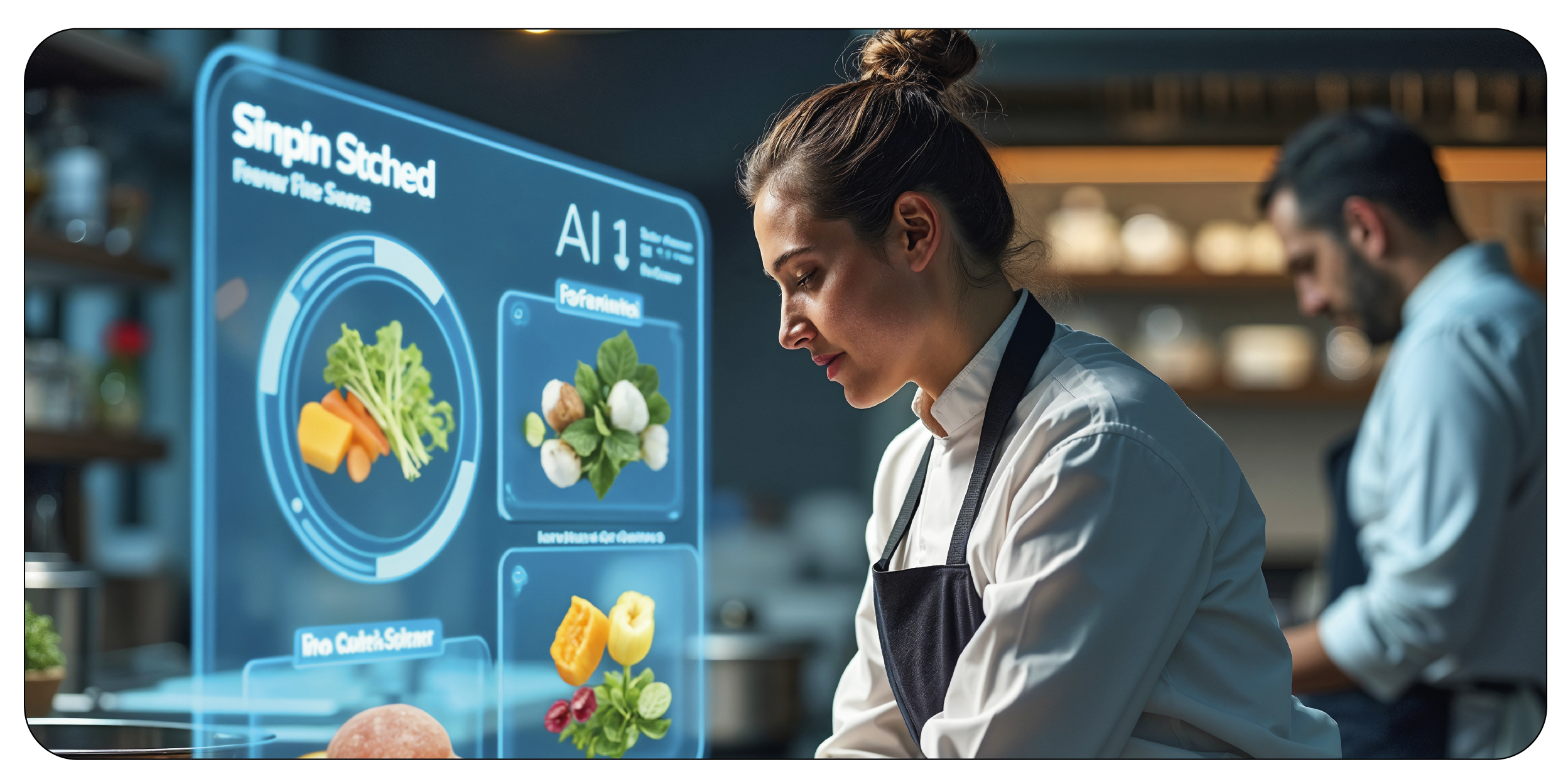
As retail continues to evolve, the importance of pricing intelligence in shaping competitive
strategies is becoming more pronounced. With rapid advancements in artificial intelligence and
machine learning, businesses can process vast amounts of pricing and product data more
efficiently than ever. This allows them to identify patterns, track market trends, and make
well-informed real-time decisions. Investing in Grocery Data Scraping Services is no longer a
luxury but a necessity for businesses aiming to maintain their competitive edge. Through Web
Scraping Grocery Data , companies can collect comprehensive insights from various sources,
including online grocery platforms and e-commerce giants. Moreover, the ability to Scrape
Grocery Delivery App Data ensures access to up-to-date information on pricing, promotions, and
product availability. By leveraging these technologies, businesses stay ahead of the competition
and position themselves for sustainable growth in an increasingly data-driven retail
environment.
How Product Data Scrape Can Help You?
-
Hyper-Localized Grocery Intelligence: We help you scrape region-specific
grocery data—including hypermarkets, specialty stores, and local delivery apps—to uncover
granular trends in pricing, product preferences, and seasonal stock changes.
-
AI-Enhanced Data Recognition: Our scrapers use AI to interpret dynamic
content like JavaScript-loaded product listings, promotional banners, and pop-up
discounts—ensuring nothing slips through the cracks.
-
End-to-End Grocery Data Pipeline: From scraping to transformation and
integration, we deliver a full data pipeline—connecting raw web data to your dashboards,
pricing models, or inventory systems effortlessly.
-
Behavior-Driven Data Insights: Beyond prices and stock, we track changes in
product rankings, customer reviews, and frequency of listing updates to help decode shopper
behavior patterns.
-
Scalable, Plug-and-Play APIs: We offer plug-and-play APIs for businesses
needing instant access to Grocery Store Datasets, scaling with your growth across platforms
and product categories.
Conclusion
The ability to Scrape Walmart, Amazon, and Instacart Pricing Data empowers businesses to navigate
the complexities of the retail landscape with confidence. Companies can uncover actionable
insights that drive more innovative pricing strategies, enhance market positioning, and foster
sustainable growth by extracting and analyzing pricing and product data from these industry
leaders. Leveraging techniques to Extract Grocery & Gourmet Food Data helps brands stay informed
about market shifts and consumer trends. As technology advances, the strategic use of Web
Scraping Grocery & Gourmet Food Data will remain a cornerstone of competitive analysis, enabling
businesses to stay agile and responsive in an ever-changing market. Embracing this approach
strengthens a company’s competitive edge and paves the way for innovation and long-term success
in the retail sector. Data-driven decision-making powered by high-quality scraped data is no
longer optional—it’s essential for thriving in today’s fast-paced grocery and gourmet food
industry.
At Product Data Scrape, we strongly emphasize ethical practices across all our services,
including Competitor Price Monitoring and Mobile App Data Scraping. Our commitment to
transparency and integrity is at the heart of everything we do. With a global presence and a
focus on personalized solutions, we aim to exceed client expectations and drive success in data
analytics. Our dedication to ethical principles ensures that our operations are both responsible
and effective.

